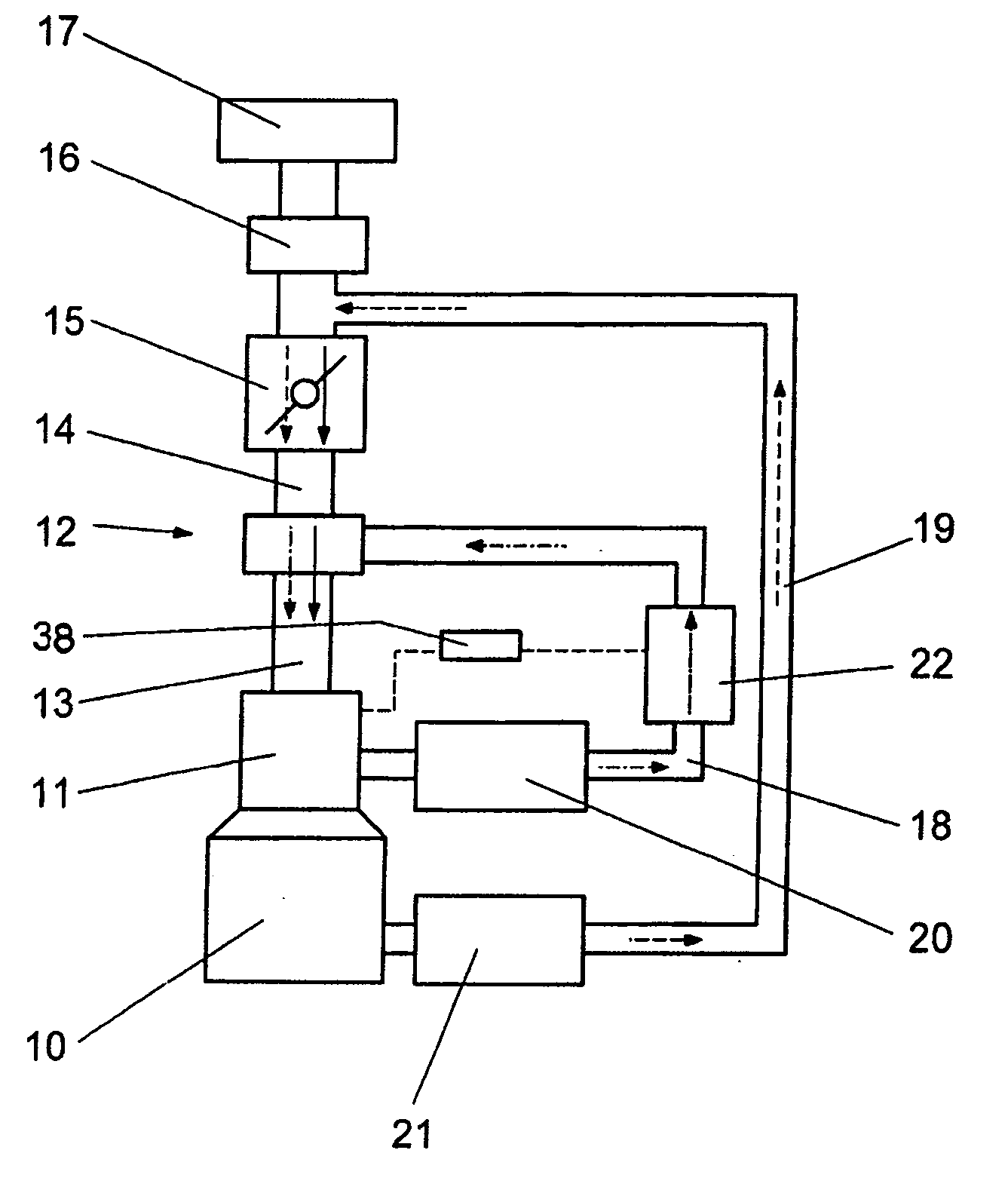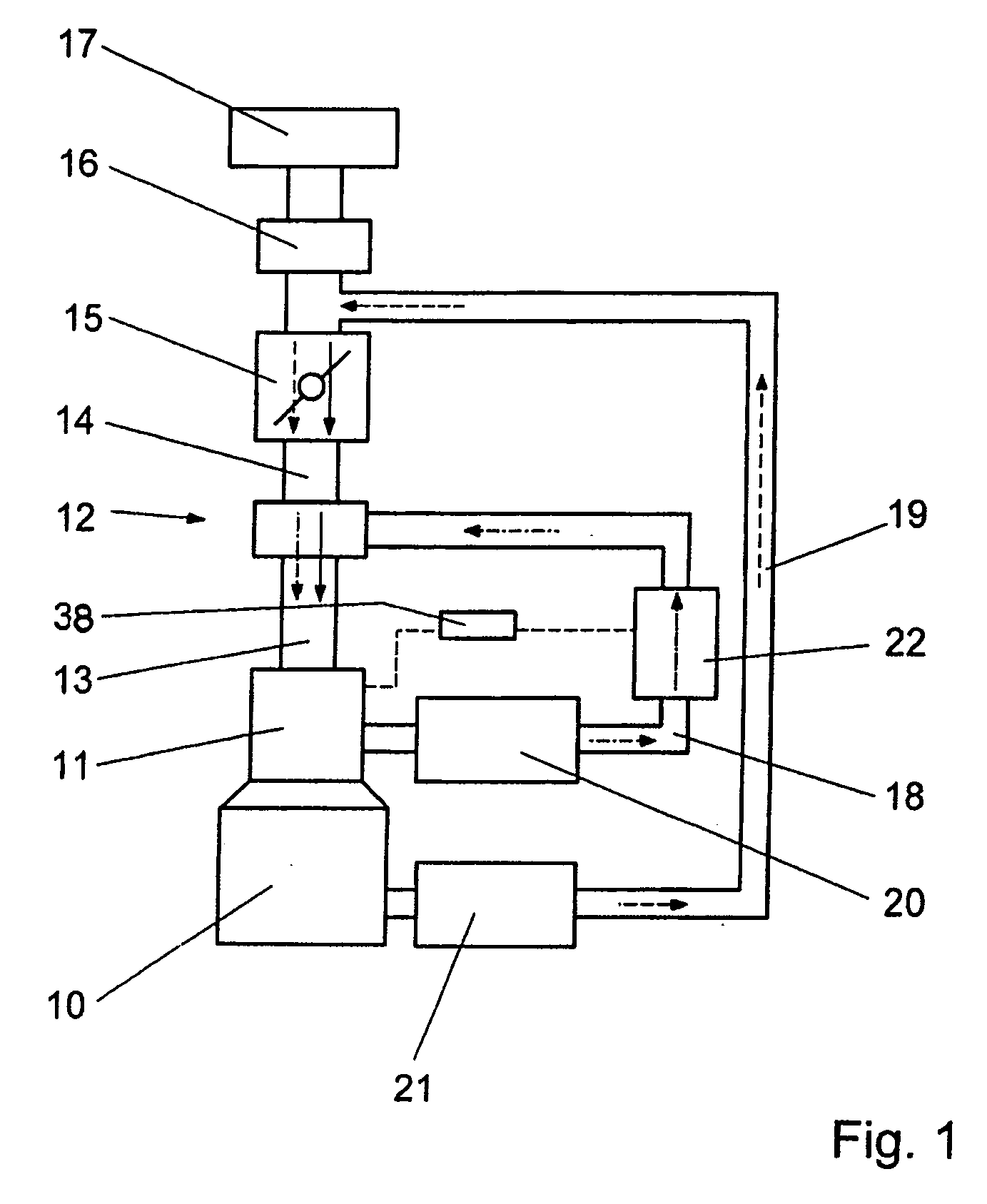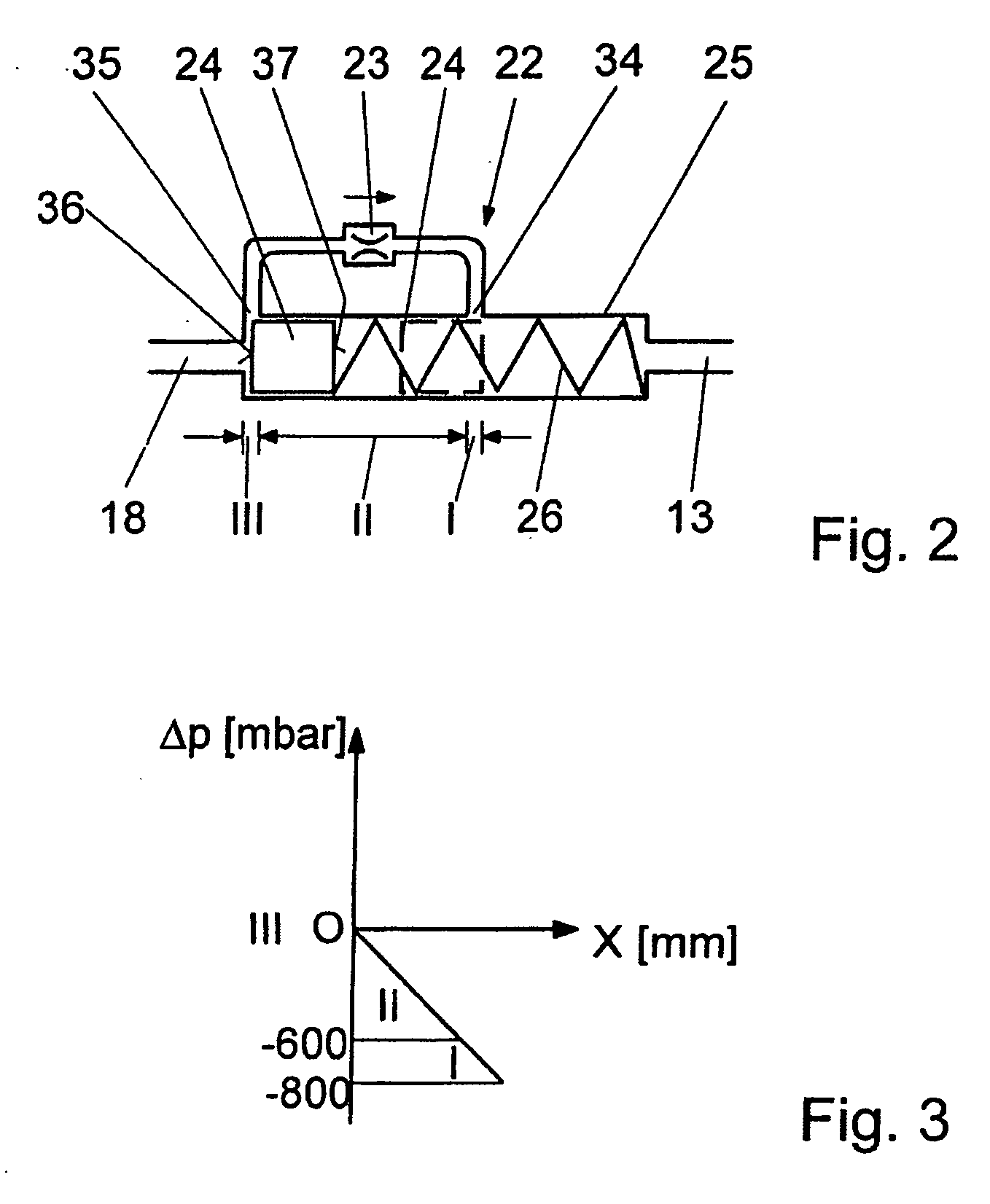Method and apparatus for venting a crankcase of an internal combustion engine
a crankcase and internal combustion engine technology, applied in combustion engines, non-fuel substance addition to fuel, charge feed systems, etc., can solve the problems of unnecessarily burdening the exhaust-gas catalytic converter, and achieve the effect of improving the oil quality and volumetric flow over the engine running tim
- Summary
- Abstract
- Description
- Claims
- Application Information
AI Technical Summary
Benefits of technology
Problems solved by technology
Method used
Image
Examples
Embodiment Construction
[0024] A crankcase 10 and a cylinder block 11 of a reciprocating-piston internal combustion engine are connected to one another in such a way that the pressure between them is substantially balanced. A first venting line 18, in which an oil separator 20 and, downstream of the latter, a control valve 22 are arranged, leads from the cylinder block 11. The first venting line 18, which is used to vent the crankcase 10 in a first, that is, part-load, operating range of the internal combustion engine opens into an intake line 14 of an intake system 12 downstream of a throttle valve 15. The intake line 14 is connected to an induction pipe 13 which is arranged on the cylinder block 11. The pressure in the induction pipe 13 substantially corresponds to the pressure in the intake line 14 downstream of a throttle valve 15.
[0025] A second venting line 19, in which another oil separator 21 is arranged, extends from the crankcase 10 to the intake line 14 upstream of the throttle valve 15. An air...
PUM
 Login to View More
Login to View More Abstract
Description
Claims
Application Information
 Login to View More
Login to View More - R&D
- Intellectual Property
- Life Sciences
- Materials
- Tech Scout
- Unparalleled Data Quality
- Higher Quality Content
- 60% Fewer Hallucinations
Browse by: Latest US Patents, China's latest patents, Technical Efficacy Thesaurus, Application Domain, Technology Topic, Popular Technical Reports.
© 2025 PatSnap. All rights reserved.Legal|Privacy policy|Modern Slavery Act Transparency Statement|Sitemap|About US| Contact US: help@patsnap.com



